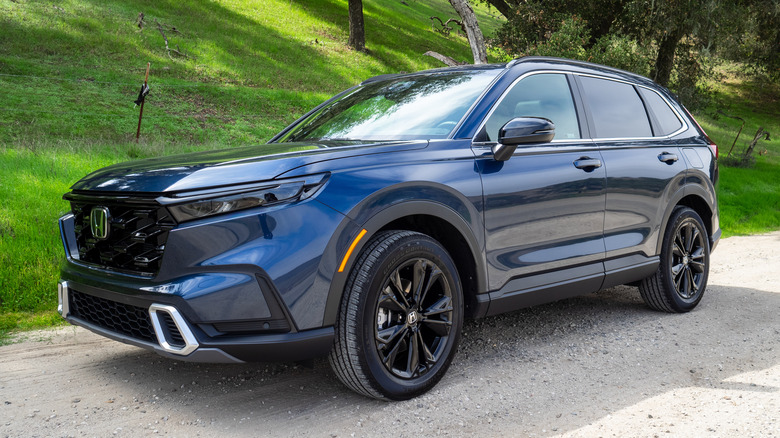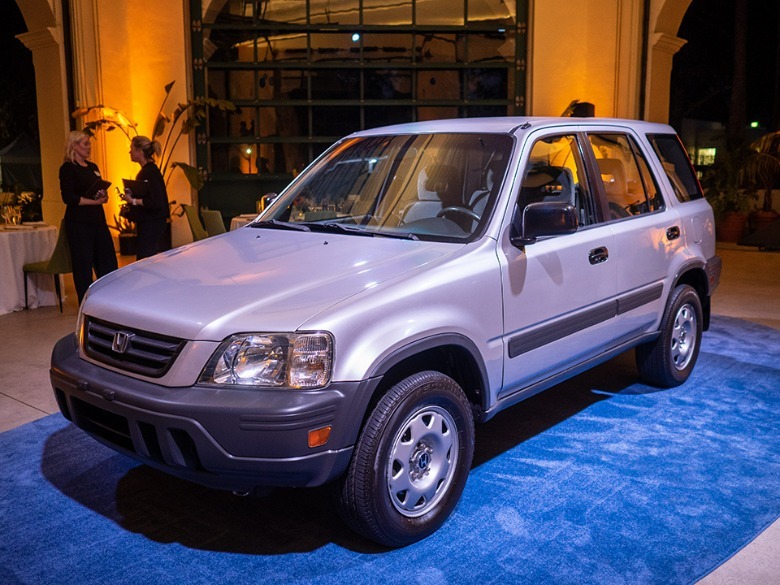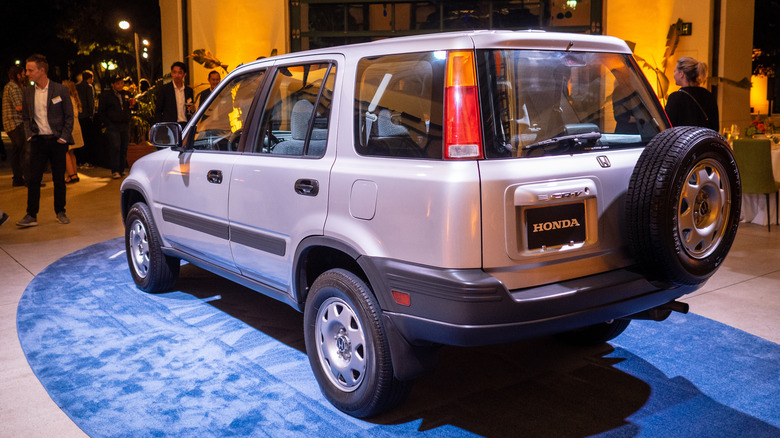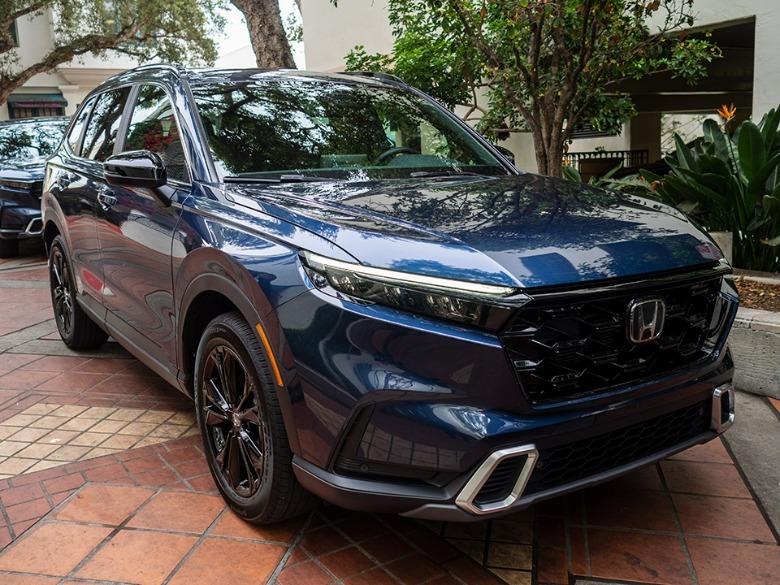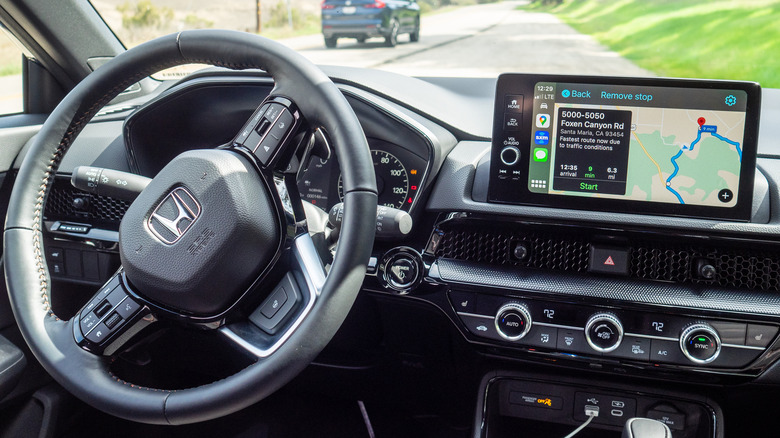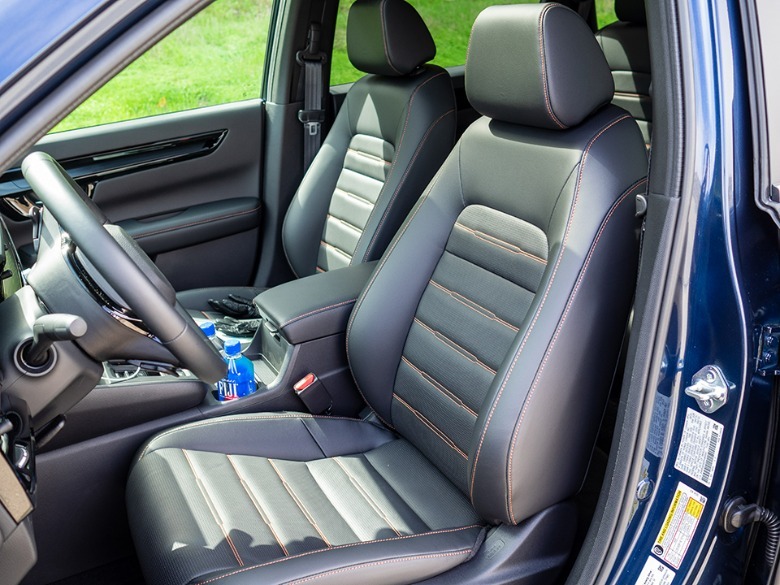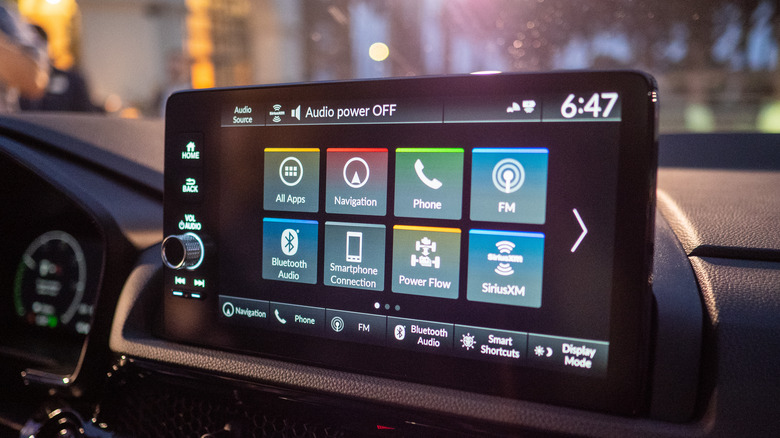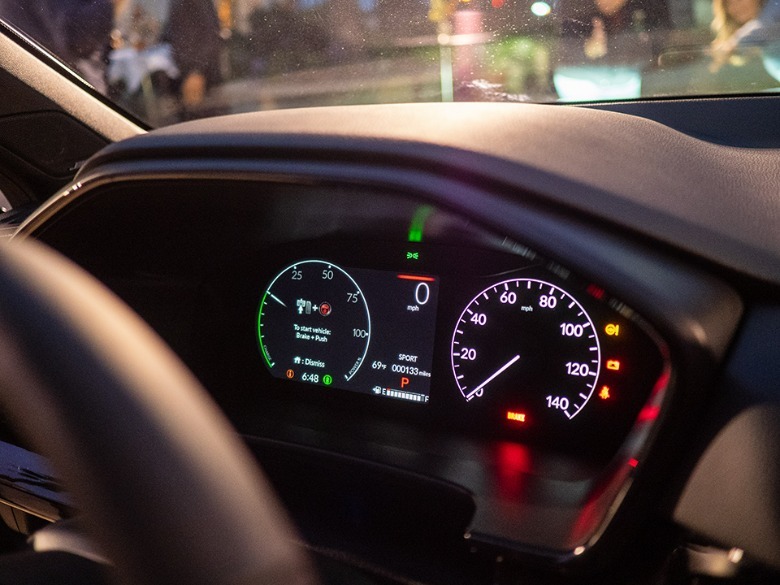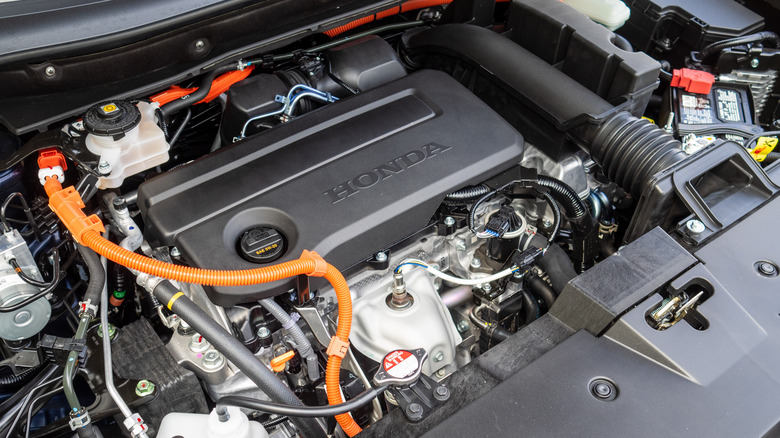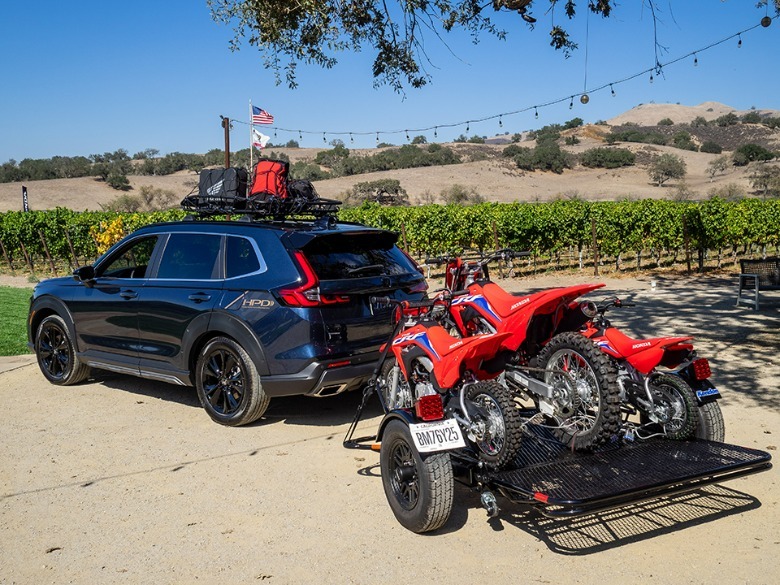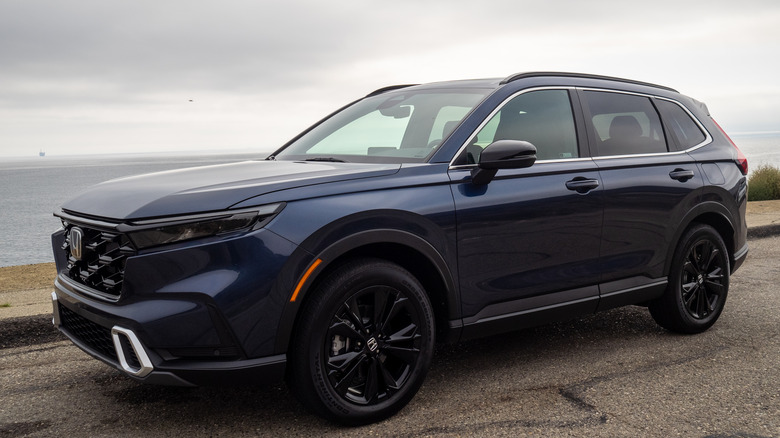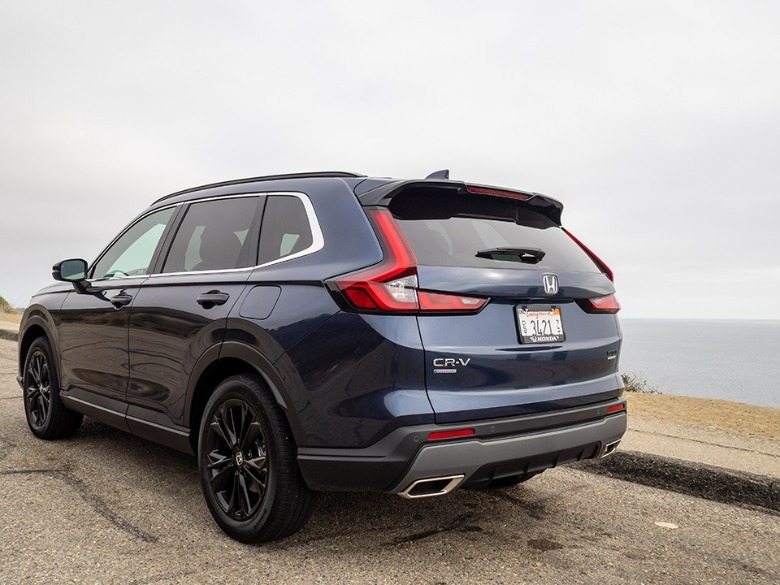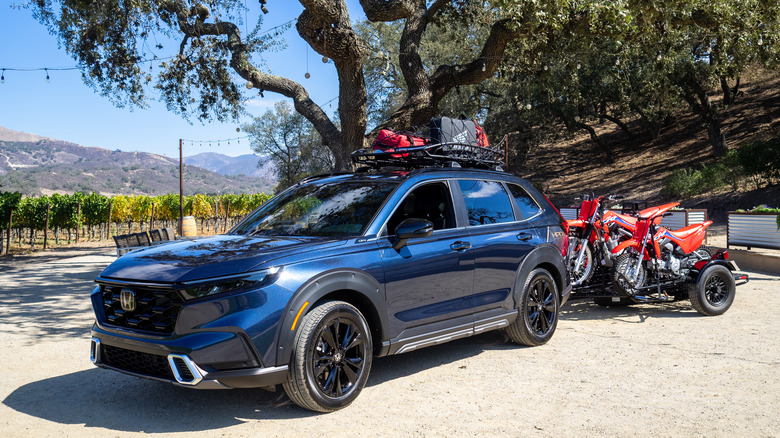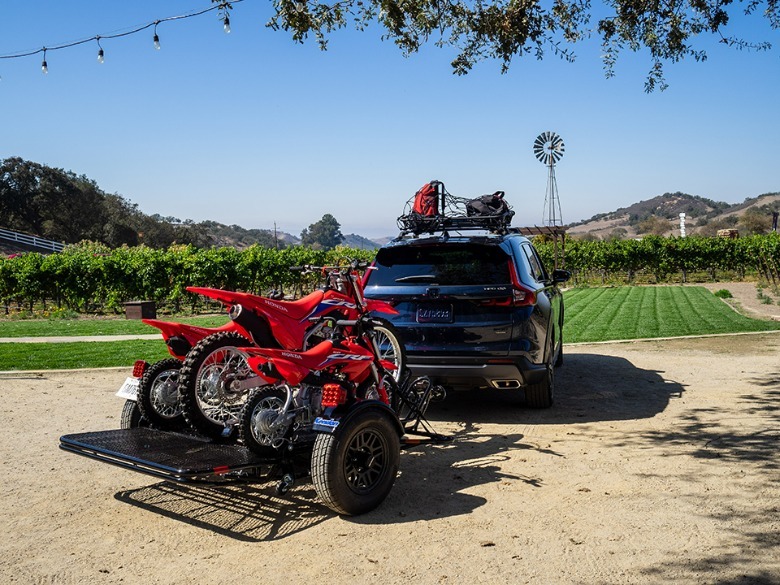2023 Honda CR-V Hybrid First Drive: A Rugged, More Capable Hybrid For The Everyday
Twenty-five years ago, quite a few things happened. Comet Hale-Bopp swung by our part of the Solar System, lighting up the evening sky for a total of 18 months. IBM's Deep Blue supercomputer beat Russian chess master Garry Kasparov in Game 6 of their epic rematch, the first time a computer ever defeated a World Chess Champion in a match. Steve Jobs, the co-founder of Apple, returned to his company after a decade in exile, bringing with him the seeds for icons like the iPhone, the colorful all-in-one iMac, and its operating system, Mac OS X.
On the automotive end, Mercedes-Benz opened its first plant in the United States, building its first non-G-Wagen SUVs down in the Deep South. The ThrustSSC team smashes through the sound barrier on the ground, landing them the first supersonic land speed record. And Honda brought over the first generation of its "Comfortable Runabout Vehicle" for the 1997 model year, the CR-V. Arriving in showrooms in February of that year, the CR-V would go on to establish itself as one of the greats in the compact crossover world, becoming Honda's best-selling vehicle in the world and the second-most popular CUV/SUV on the market; having a picnic table in the cargo loading floor on the first-gen CR-V definitely helped attract a few fans.
Twenty-five years later, Honda has once again updated its long-running crossover, introducing the 2023 CR-V in EX and EX-L forms earlier this year. With fuel prices bouncing back up as of late, though, Honda found the perfect moment to reveal the next version of the new sixth-generation compact crossover, the 2023 CR-V Hybrid. That meant bringing journalists – including yours truly – down to Santa Barbara, California to spend a day with the fuel-saving version of the CR-V, passing by examples along the way of why such a vehicle is needed today.
The return of the boxy compact crossover
The first and second generations of the Honda CR-V had some rounded corners here and there, but compared to its prime competitor, the first generation Toyota RAV4, it was a boxy — and roomier — affair. The above example, once owned by a Honda employee before donating it to Honda's museum, offered plenty of rear legroom compared to the cramped five-door Toyota, which was built with Japan's stringent tax codes in mind. Though the first-gen CR-V first sold at home in Japan, this crossover was destined for the U.S. market because of its size (and the fact it had three more cupholders than the first-gen RAV4, including two hiding within the center console).
The third-gen CR-V was when a lot of its boxy looks went away. Instead, it became sort of a rounded, softer crossover, especially evident in the side glass. The theme continued with the fourth-gen model from the early 2010s into the now-departed fifth-gen CR-V from the mid-2010s through 2022. Those jellybean days are over with the 2023 CR-V and CR-V Hybrid, though. As Honda themselves say, the all-new crossover gains a "rugged and sophisticated styling" befitting of a rougher, tougher time, following in the new styling direction established by the 2023 HR-V and 11th-gen Civic. In a lot of ways, it's a return to the boxy days of the late 1990s through the mid-2000s. A few of my friends in the 24 Hours of Lemons community like the looks of this CR-V overall, as do I. You might like its boxy looks, too.
I can see for miles and miles
If you owned a vehicle from the 1980s and 1990s, you might recall how easy it was to see out of the windshield. If you own/owned a fifth-gen Honda CR-V, on the other hand, then you know visibility isn't as good as it used to be. Aside from the thicker A-pillars to accommodate safety cells and airbags, the fender bulges blending into the hood took up a fair bit of visibility in front of the windshield. This has changed dramatically with the 2023 Honda CR-V and CR-V Hybrid. Owners now have 4.4 degrees more viewing space to take in everything, in large part due to the base of the A-pillars being moved 4.7 inches rearward, 2.8 inches outward and 1.4 inches lower; the pillars are thinner, too. Hidden wipers and door-mounted side mirrors open up more visibility, contributing to greater safety overall while driving.
Not only does the driver get a wider, better view of the road with the 2023 CR-V and CR-V Hybrid, but they and the front passenger receive all-new body-stabilizing seating with tons of lumbar, pelvic and thigh support, along with improved support of the tailbone and connection between the lumbar and pelvic surfaces. Talk about comfort! And speaking of, there's a lot of room to go around in the sixth-gen CR-V.
Headroom for front and rear occupants is 38.2 inches. Legroom up front is 41.3 inches, and an even 41 inches for the rear passengers, 0.6 inches more than the outgoing fifth-gen model. The rear occupants can also tilt the 60/40 seat back up to 10.5 degrees for maximum relaxation on long road trips. Finally, the cargo area gains 3.1 cu.-ft. of space over the outgoing model with the seats in place (36.3 cu.-ft. in 2023 vs. 33.2 cu.-ft. in 2022). With the seats down, that increases to 76.5 cu.-ft., 3.0 cu.-ft. more than 2022's 73.5 cu.-ft.
A much-needed tech upgrade
During my drive of the 2023 Honda CR-V Hybrid, I was offered a chance to drive the outgoing model, a hybrid dressed in a lovely shade of red, on a short loop near the vineyard where my group stopped for lunch. What wasn't so lovely was how small the touchscreen was, nor how low it was placed. The TFT gauge cluster was fine, but not so great to look at. Perhaps my thoughts were colored by being in the new CR-V Hybrid for nearly the entire day. After all, it had a 9-inch touchscreen (a 7-inch screen is standard on the Sport and Sport Touring trims, the 9-incher an option for the latter trim) filled with all the apps you could ever need on the first screen, plus fewer menus to dig through.
While Android Auto and Apple CarPlay (the latter in both wired and wireless formats) are present and correct, the hottest features for the 2023 CR-V and CR-V Hybrid are push buttons and knobs. The HVAC unit, along with the touchscreen, are all controlled by physical switchgear (just remember to push down on the Home and Back buttons on the touchscreen, as they blend in well with the rest of the unit).
As for the instrument cluster, it's all-new, too, for 2023. On one side, an analog speedometer with warning lights. On the other, a TFT display with digital speedo, range indicator, trip computer, driver attention monitor, etc. All of the fun tech is framed by a handsome dash featuring honeycomb detailing and toggle switches on the vents to move the air around. Sound is handled by a 12-speaker Bose sound system.
The Honda Sensing suite of safety tech now includes traffic jam assist, traffic sign recognition and low-speed braking control, plus updates to the collision mitigation, road departure, adaptive cruise control and lane keeping systems. With the exception of the low-speed braking control and parking sensor systems — which are available from the EX-L on up — all of these additions and updates are on all trims of the 2023 CR-V and CR-V Hybrid.
Hybrid for the fuel pump, power to tow some dirt bikes
While the 2023 Honda CR-V EX and EX-L receive a 190-horsepower 1.5-liter turbo-four to move the front or all four wheels around, the CR-V Hybrid Sport and Sport Touring use a 2.0-liter direct-injection Atkinson four-banger paired with a two-motor hybrid system. Total output of the hybrid powertrain is 204 horses and 247 lb.-ft. of torque, split 50/50 through the eCVT transmission. It's a small jump from the fifth-gen's hybrid system output of 201 horsepower and 232 lb.-ft. of torque, which was split 60/40 front and rear, but that power works well enough to give the CR-V the ability to do something it had never been rated to do before.
Tow.
Sure. It can't compete with something like the Ford Bronco Sport (one of the CR-V's competitors), which can tow up to 2,200 pounds, but the CR-V Hybrid can pull up to 1,000 pounds behind it, like the above trailer loaded with a pair of mini dirt bikes to go with the larger dirt bike in the middle. It means consumers can have a bit more fun on the open road (and beyond) while continuing to save money at the pump. The front-drive Hybrid Sport is EPA-rated at 43 mpg city, 36 mpg highway, 40 mpg combined. The AWD Hybrid Sport Touring, meanwhile, is rated at 40 city, 34 highway, 37 combined. Either one will keep you away from the gas station for quite some time between refueling, which is a godsend amid some of the fuel prices I saw while in Central and Southern California, ranging between $6 and $7 for regular.
Put this hybrid on your to-drive list
How does the 2023 Honda CR-V Hybrid drive, though? For that answer, I grabbed one of the (new to Honda and the CR-V) Canyon River Blue Metallic examples waiting in line. The prescribed route would take us through the Cachuma Lake Recreation Area and into the mountains for a lunch stop at Zaca Mesa Winery, followed by drives of the CR-V EX-L and of the outgoing CR-V Hybrid near the winery before hopping back into our blue crossovers for the journey back to the hotel along Pacific Coast Highway.
The new CR-V models all have a 15 percent stiffer body, plus improvements to the steering and more rigidity to the front and rear subframes, which are all-new to the 2023 CR-V and CR-V Hybrid. Additionally, there are four driving modes available for the new model: Sport, Normal (the default), Econ, and the all-new Snow mode for smoother acceleration over the white stuff. MacPherson struts up front, multi-link suspension in the back, stabilizer bars and a set of 19-inch Berlina black wheels over a set of 12.3- (front) and 12.3- (rear) inch brakes all around, and you have a recipe for some good driving dynamics.
I got to try out three of the four driving modes (no snow to test the new one) during my long drive around Central California. I definitely had fun in Sport mode as far as accelerating out into the open road, making the most out of it when finally getting a chance to pass a slow-moving Lexus sedan at one point in the morning portion of the drive. Otherwise, Normal was more than enough to cruise along (especially with the adaptive cruise control turned on for most of the trek). As for Econ, I couldn't tell much from my short time with it, other than believing it was saving a bit more fuel while heading towards the PCH.
A more capable CR-V Hybrid worth the drive and the money
Right now, Honda is riding high on its hybrid road map, with sales strongest along the West Coast (no guesses as to why) and New England down through the DelMarVa region. New Accord and Civic hybrid models are coming soon, as well as Honda's first EV, the 2024 Prologue. By 2030, the automaker expects that 40 percent of its North American sales to consist of EVs. By 2050, it expects to be carbon neutral. And then, there are the big investments into Honda's electric future, with two plants in Ohio devoted to building EVs and two more (also in Ohio) to build the batteries for them. That's quite the journey, for sure.
In the meantime, Honda's bullish on the 2023 CR-V Hybrid. It should feel that way. From its handsome boxy looks to its newfound ability to tow, this compact crossover will not only bring in the long-time fans, but also new drivers looking for something rugged enough for the everyday while saving money and fuel along the way. Twenty-five years later, Honda continues the legacy of the CR-V with a proper successor to the throne.
